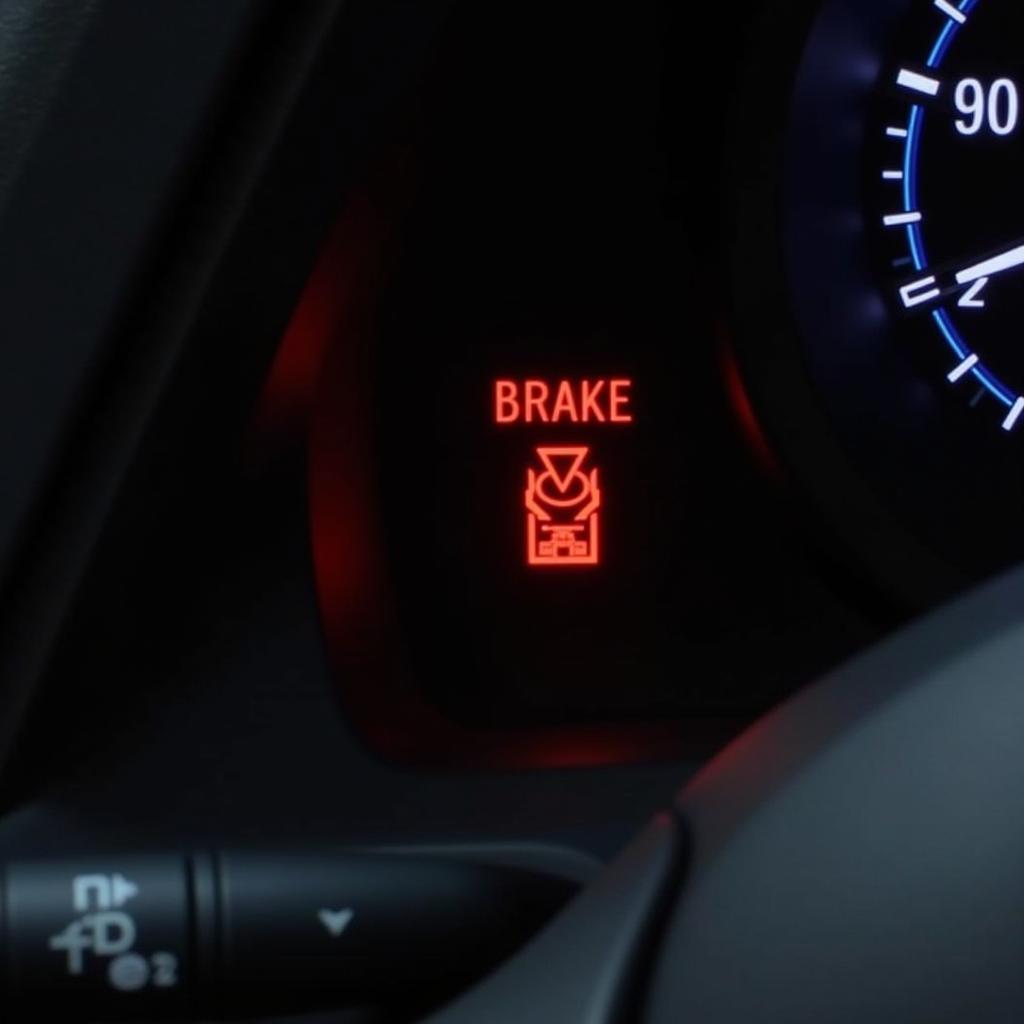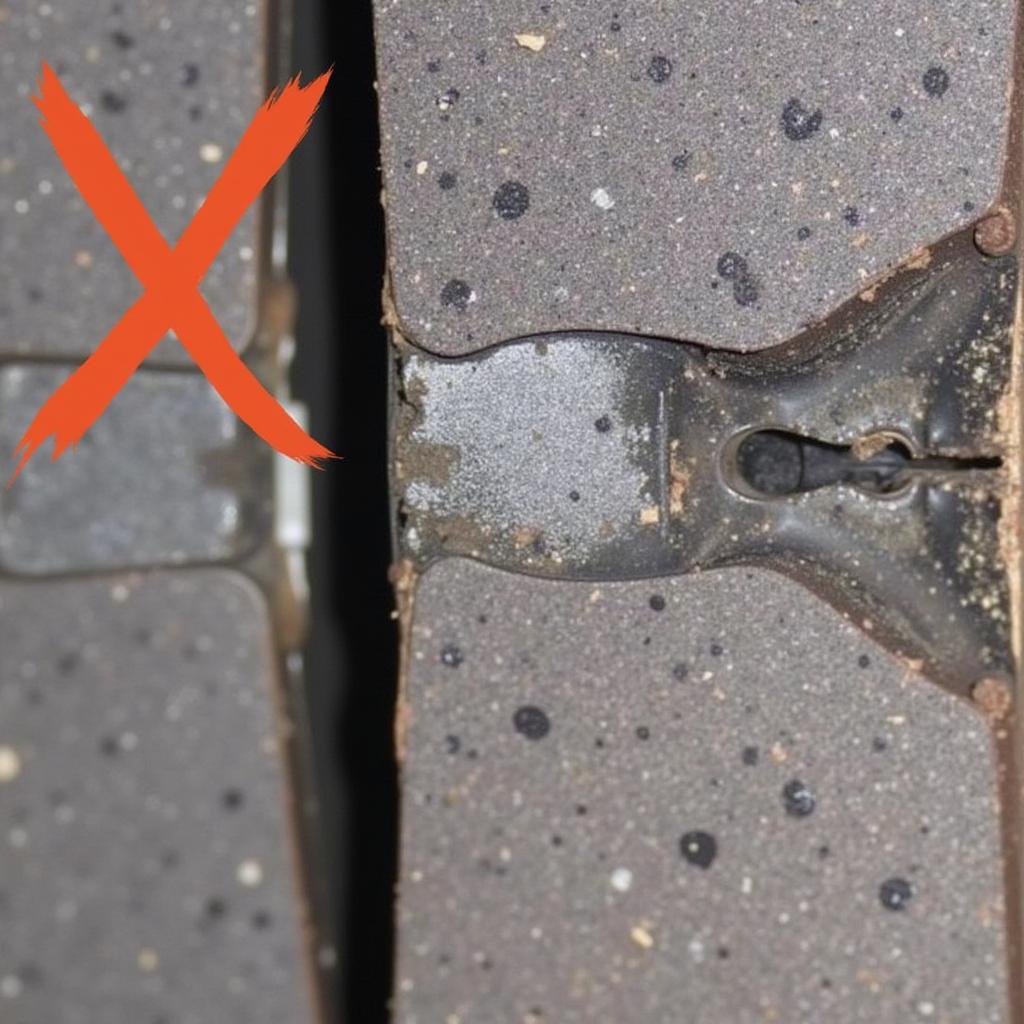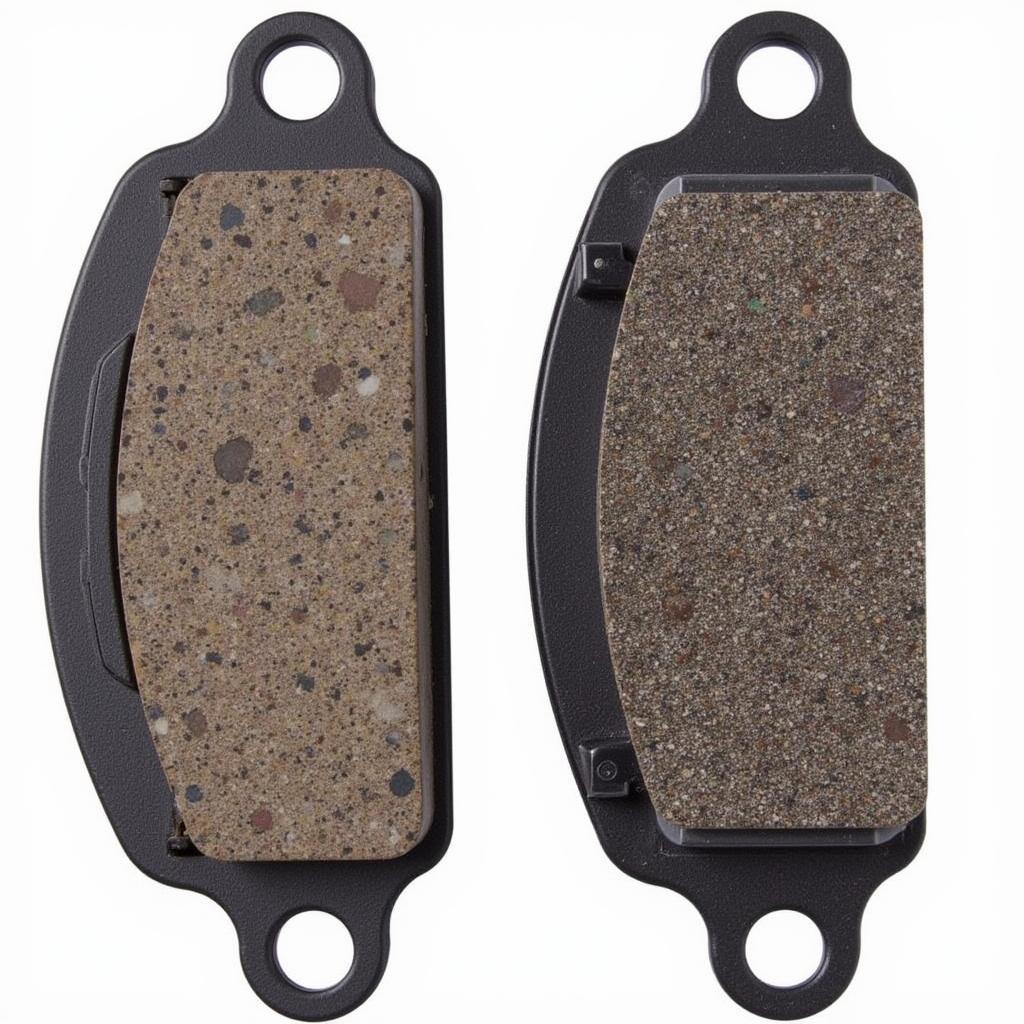The Toyota Prius is known for its reliability and fuel efficiency, but like any car, it can experience issues. One common problem that Prius owners may encounter is the dreaded brake system warning light. If you’re a 2010 Prius owner, seeing this light illuminate on your dashboard can be concerning. This comprehensive guide will delve into the possible causes of the 2010 Prius brake system warning light and provide you with insights on troubleshooting and resolving the issue.
 2010 Prius Dashboard with Brake System Warning Light Illuminated
2010 Prius Dashboard with Brake System Warning Light Illuminated
Understanding Your Prius’s Brake System
Before we jump into the causes, it’s crucial to understand how the braking system works in a 2010 Prius. This model features a unique regenerative braking system that recovers energy during braking to recharge the hybrid battery. This system is complex and intricately linked to the traditional hydraulic braking system. When you press the brake pedal in a 2010 Prius, the car first utilizes regenerative braking, using the electric motor to slow down the vehicle and generate electricity. If more braking force is needed, the hydraulic system kicks in, utilizing brake fluid and components like calipers, rotors, and brake pads to bring the car to a complete stop.
Common Causes of the 2010 Prius Brake System Warning Light
The brake system warning light on your 2010 Prius is designed to alert you of potential issues within this intricate system. Here are some of the most frequent culprits:
1. Low Brake Fluid Level
One of the most common reasons for the brake system warning light to turn on is low brake fluid. Brake fluid is essential for the hydraulic system to function correctly, and a leak or low fluid level can trigger the warning.
2. Worn Brake Pads
Your Prius’s brake pads are designed to wear down over time. When they become too thin, a sensor embedded within the brake pad will make contact with the rotor, triggering the warning light. This sensor is a safety measure designed to alert you that it’s time for a brake pad replacement.
 Worn Brake Pads on a 2010 Toyota Prius
Worn Brake Pads on a 2010 Toyota Prius
3. Faulty Brake Light Switch
The brake light switch is responsible for activating your brake lights when you press the brake pedal. A malfunctioning brake light switch can not only prevent your brake lights from working but may also trigger the brake system warning light.
4. Issues with the Regenerative Braking System
The 2010 Prius’s regenerative braking system, while innovative, can also experience issues. Problems with the hybrid battery, the electric motor, or the control module that manages the regenerative braking system can lead to warning lights.
5. ABS System Malfunction
Your Prius is equipped with an Anti-lock Braking System (ABS) that prevents the wheels from locking up during hard braking. A fault within the ABS system, such as a malfunctioning wheel speed sensor, can also illuminate the brake system warning light.
Troubleshooting the Brake System Warning Light
If your 2010 Prius’s brake system warning light is on, it’s crucial not to ignore it. Here’s a step-by-step approach to help you diagnose the problem:
-
Check Brake Fluid Level: Begin by safely parking your car on a level surface and allowing the engine to cool down. Locate the brake fluid reservoir under the hood (refer to your owner’s manual for its exact location). Check the fluid level – it should be between the minimum and maximum marks.
-
Inspect Brake Pads: If the brake fluid level is adequate, the next step is to inspect your brake pads. You can visually assess the pad thickness through the spaces between the wheel spokes. If the pads appear significantly worn down, it’s best to take your Prius to a qualified mechanic for a closer inspection and potential replacement.
 Checking the Brake Fluid Level in a 2010 Toyota Prius
Checking the Brake Fluid Level in a 2010 Toyota Prius
-
Listen for Unusual Noises: Pay close attention to any unusual noises while driving, especially when applying the brakes. Grinding or screeching sounds usually indicate worn brake pads, while clicking or popping sounds might suggest a problem with the ABS system.
-
Use a Diagnostic Scanner: For a more in-depth diagnosis, consider using an OBD-II diagnostic scanner. These scanners can be plugged into your Prius’s diagnostic port and can read trouble codes stored in the car’s computer. This can pinpoint the specific area of the braking system that’s causing the issue.
“Remember, safety is paramount when it comes to brakes. If you’re unsure about any aspect of inspecting or diagnosing the issue, it’s always best to err on the side of caution and consult a qualified mechanic.” – John Smith, Senior Automotive Technician
Conclusion
The brake system warning light in your 2010 Prius is a crucial safety feature. By understanding its potential causes and following the troubleshooting steps outlined above, you can address the issue promptly and ensure your Prius remains safe to drive. Remember, regular maintenance, including timely brake pad replacements and brake fluid checks, can go a long way in preventing brake system problems and keeping you safe on the road.


